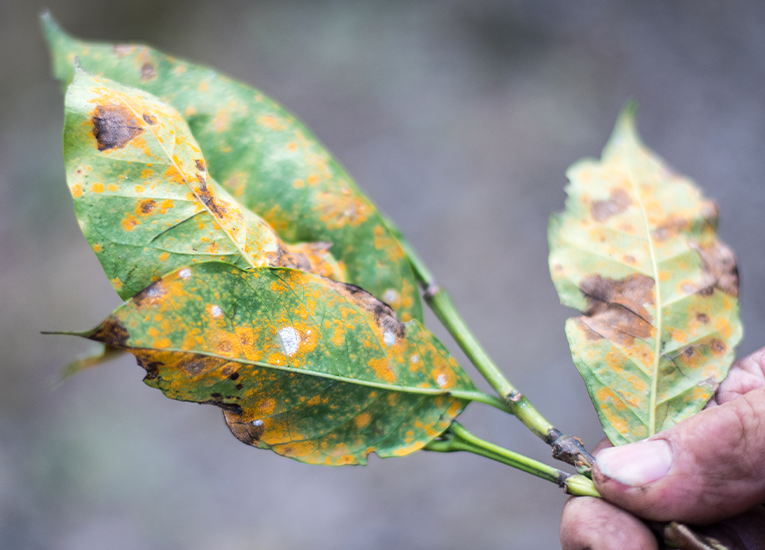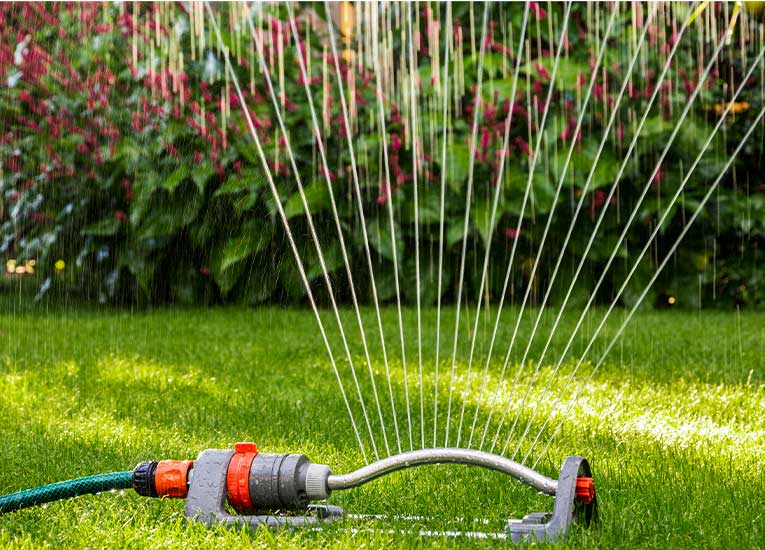When it comes to weed control, one of the most common questions we get asked every year is:
“What’s the easiest way to identify a weed?”
Some weed types are incredibly aggressive, and the most invasive types upset entire ecosystems. That’s nothing to take lightly. And since we care too much not to address this question, we’d like to offer some practical advice on how to identify common weeds you might come across while out in your yard. Then, we’ll also discuss a few ways to get rid of them if/when they make an appearance.
Why Controlling Weeds is Important
Weeds are disruptive because they compete for the nutrients, water, and sunlight that exist within a given growing space. As weeds begin to flourish, various pests and diseases are given the opportunity to move in and take over what was once healthy.
We don’t want that to happen to you! That’s why we’ve set out to equip you with the tools you need to effectively manage your lawn and garden.
It will take some effort, but as long as you remain diligent, you’ll keep your property looking beautiful from season to season.
Proactive Weed Control
To start, we want to stress how important it is to tackle weeds early. When it comes to combating weeds on your property, it’s good practice to abide by this rule: the sooner the better.
If you can begin treating weed issues before they emerge, then you’re off to a great start. However, if time has passed and weeds have already emerged, it’s not too late! We have products for either situation, but in order to get the best results, always start early.
How to Identify Weeds
Now that you know when to start, it’s also important to figure out which weeds you’re up against. Understanding how a certain weed is classified is the first step toward controlling it because weeds in similar groupings are often managed the same way.
This process of classification is not always easy. Some weed species can be classified in one or more of these groups, and others cannot be classified in any of these groups. There’s a lot of nuance to the topic, but, for the sake of this blog post, we’ll discuss general categories and groupings, then give examples of some common weeds in each one.
Annuals vs. Perennials
One way that weeds can be categorized is by their life cycle or life span. This descriptor generally sorts weeds into two groupings: annuals or perennials.
Annuals
An annual weed grows from seeds that were dropped in the previous growing season. Annual weeds grow rapidly, flower, set seed, and die in a single season. Some examples of annual weeds would be crabgrass, foxtail, knotweed, lambsquarter, purslane, and velvetleaf.
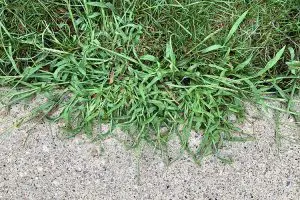 Crabgrass |
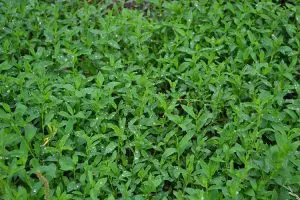 Knottweed |
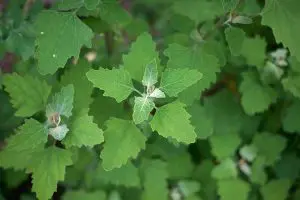 Labsquarter |
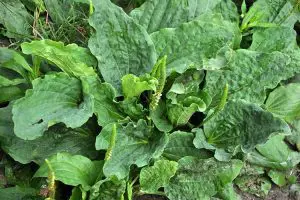 Purslane |
Perennials
Perennial weeds come back year after year and are more difficult to control. They also have more complex underground root systems, with tubers and rhizomes that can reproduce from pieces and fragments left behind in the soil. Examples of these are weeds such as dandelion, plantain, pokeweed, quackgrass, and thistle.
 Plantain |
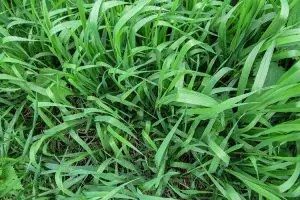 Quackgrass |
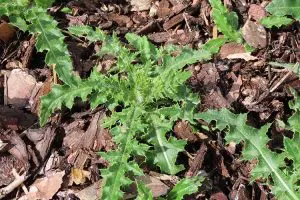 Thistle |
 Pokeweed |
Broadleaf or Grassy Weeds
Another way that weeds can be categorized is by their physical composition or appearance. In this case, weeds are generally classified as broadleaf or grassy weeds. While some weeds cannot be classified within these two groups, most common lawn and garden weeds easily fall into either category.
Broadleaf Weeds
Broadleaf weeds are those with leaves that are wider and often have a major vein running down the center of the leaf, with smaller veins branching off of it. Examples of broadleaf weeds include clover, creeping Charlie, dandelion, knotweed, lambsquarter, plantain, pokeweed, purslane, thistle, and violet.
Grassy Weeds
Grassy weeds have long, thin leaves with parallel-set veins. As the name implies, they are often in the grass family or another closely related family. Examples of grassy weeds include crabgrass, foxtail, and quackgrass.
Woody or Vining Weeds
A third way that weeds can be classified is based on how they grow. This category generally divides weeds into two groups: woody and vining.
Woody Weeds
Woody weeds are trees and shrubs that have woody or dense, fibrous plant tissue. They are usually perennial weeds like bush honeysuckle, poison ivy, and tree of heaven.
Vining Weeds
Vining weeds are those that climb or vine by tendrils or aerial roots. They are difficult to classify because they can be woody or herbaceous, perennial or annual. Examples of vining weeds include bindweed, honeyvine milkweed, poison ivy, and trumpet creeper.
Getting Rid of Weeds
Pre-emergent products like Sandbur & Crabgrass Preventer are your best defense. It provides outstanding pre-emergent control of more than 20 broadleaf and 20 grassy weeds in your landscape, turf, and ornamental planting areas.
Remember, when it comes to combating weeds on your property, the sooner the better! It’s best practice to never let them seed in the first place. If they’ve begun to emerge and you’re going to attempt to weed your yard, weed early, when the weeds are young.
If you catch them in time, you can pull them out or cut them below the soil line. Be careful not to dig too deep: you don’t want to expose new weed seeds to the surface. Weeds are even easier to remove when the ground is damp, like after fresh rainfall.
For those of you who know which weeds you’re working with, we suggest a helpful product like Lawn Weed Killer. You can use it for both cool and warm-season grasses, and this lawn weed killer uses a combination of three selective herbicides to control a wide variety of hard-to-kill broadleaf weeds, such as dandelion, clover, and plantain.
Lastly, if weeds have overtaken your patio, sidewalks, or driveway, try X-Out™ Grass & Weed Killer. If you need a non-selective herbicide to effectively control broadleaf weeds and grasses, this is the one.
Additional Tips
Once you clean out a section of weeds, make sure to clean your gardening tools before you move from one area of the garden to another. This will help to avoid spreading weed seeds. It’s also important to clean up any residual debris, throwing away any scraps that you left behind.
With a little bit of planning—preferably five to seven weeks before planting seeds—you can also cover a difficult section with Weed Armor Fabrics. Weed prevention fabrics allow air, water, and nutrients to pass through while blocking sunlight so that weeds can’t grow. This is useful around trees and ornamentals like flowers, bushes, and decorative shrubs.
Once in place, cover the fabrics with about 2″–3″ of mulch or stone to anchor and protect each treated section. This will be a great way to head into the growing season.
Finally, be intentional about watering your plants. Weeds love water, too, so it’s good practice to directly water the areas you want to grow. For more targeted spots like trees and shrubs, we recommend two options for getting your trees exactly what they need.
Tree Watering Bag: This 20-Gallon Bag provides 6–8 hours of watering for trees up to 4” in diameter. It’s constructed from a heavy-duty PVC, UV-treated material to withstand the elements and improve water conservation.
Tree Watering Ring: This 15-gallon ring provides 3–4 hours of watering for trees up to 6” in diameter. Its low profile is great for easy installation and filling. Also constructed from a heavy-duty PVC, UV-treated material to withstand the elements.
If you have additional questions, please don’t hesitate to reach out!

